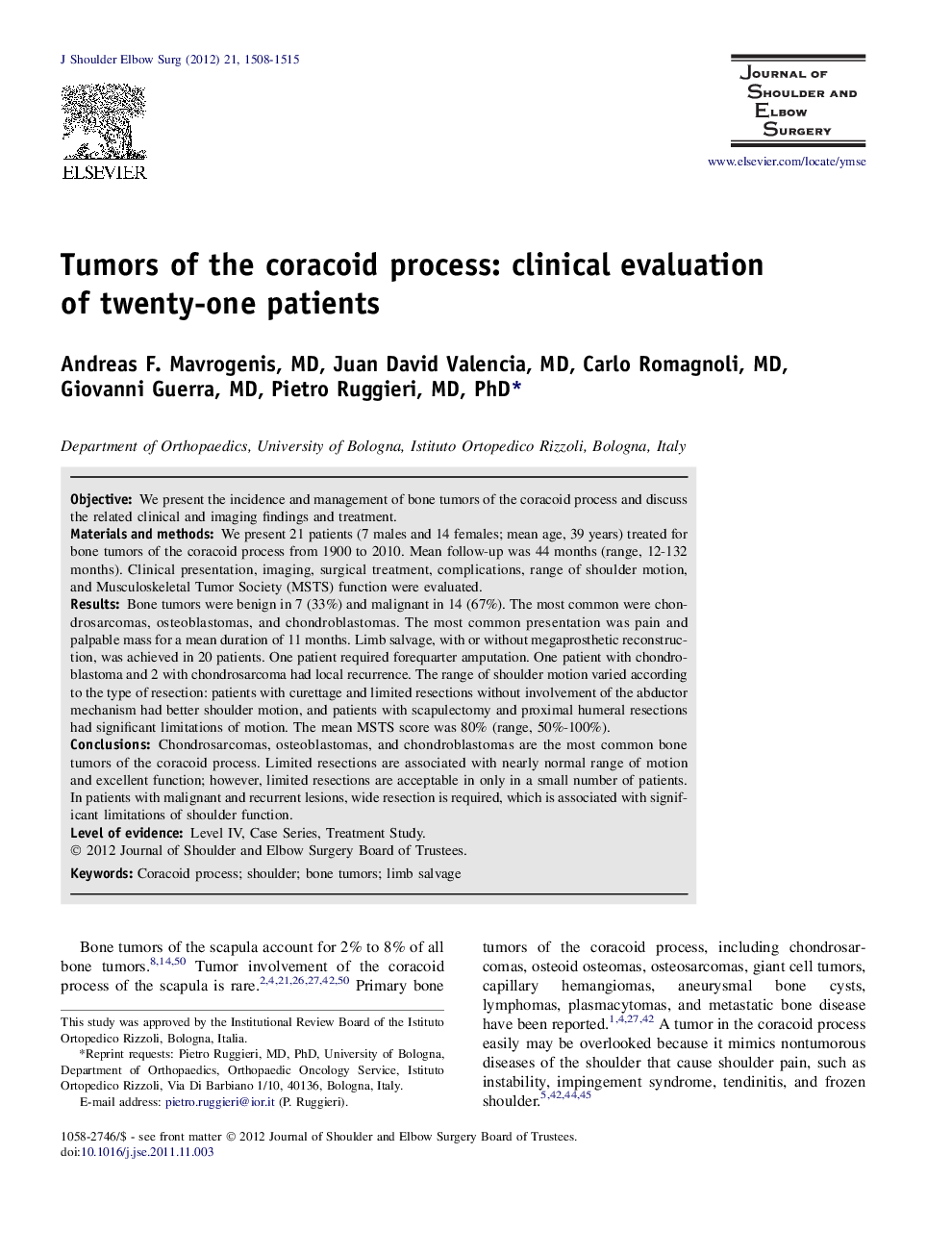| Article ID | Journal | Published Year | Pages | File Type |
|---|---|---|---|---|
| 4073981 | Journal of Shoulder and Elbow Surgery | 2012 | 8 Pages |
ObjectiveWe present the incidence and management of bone tumors of the coracoid process and discuss the related clinical and imaging findings and treatment.Materials and methodsWe present 21 patients (7 males and 14 females; mean age, 39 years) treated for bone tumors of the coracoid process from 1900 to 2010. Mean follow-up was 44 months (range, 12-132 months). Clinical presentation, imaging, surgical treatment, complications, range of shoulder motion, and Musculoskeletal Tumor Society (MSTS) function were evaluated.ResultsBone tumors were benign in 7 (33%) and malignant in 14 (67%). The most common were chondrosarcomas, osteoblastomas, and chondroblastomas. The most common presentation was pain and palpable mass for a mean duration of 11 months. Limb salvage, with or without megaprosthetic reconstruction, was achieved in 20 patients. One patient required forequarter amputation. One patient with chondroblastoma and 2 with chondrosarcoma had local recurrence. The range of shoulder motion varied according to the type of resection: patients with curettage and limited resections without involvement of the abductor mechanism had better shoulder motion, and patients with scapulectomy and proximal humeral resections had significant limitations of motion. The mean MSTS score was 80% (range, 50%-100%).ConclusionsChondrosarcomas, osteoblastomas, and chondroblastomas are the most common bone tumors of the coracoid process. Limited resections are associated with nearly normal range of motion and excellent function; however, limited resections are acceptable in only in a small number of patients. In patients with malignant and recurrent lesions, wide resection is required, which is associated with significant limitations of shoulder function.
